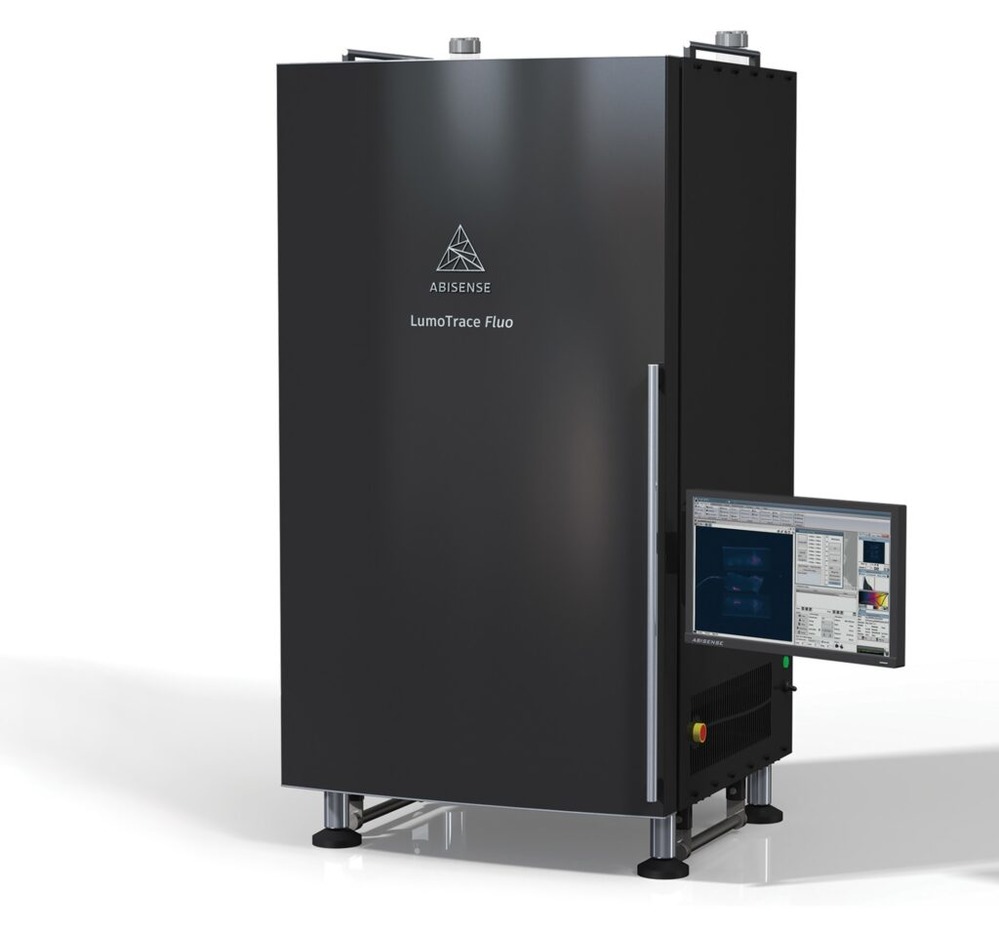Catalog
Equipment
2226 products
View:
- Selected: 0Areas of use
- Selected: 0Item names
- Selected: 0Manufacturer
- Selected: 0Made in
- Selected: 0Additional
View:
2226 products
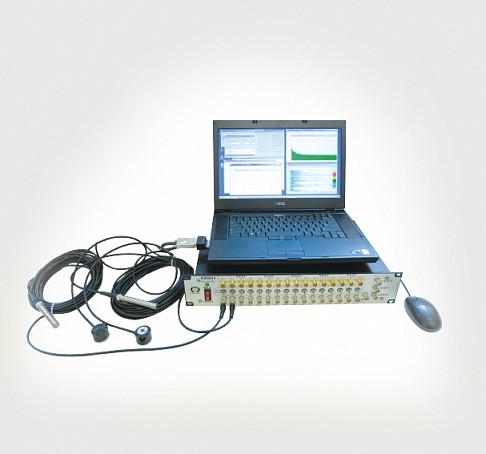
Multifunctional vibration measuring complex MVK-32
Designed for:
measurements (along with the primary measuring transducers of PIP) of vibroacoustic characteristics according to specified algorithms during complex monitoring of buildings, structures and mechanisms.
VNIIFTRI
Mendeleevo
Produced in: Mendeleevo, Moscow region
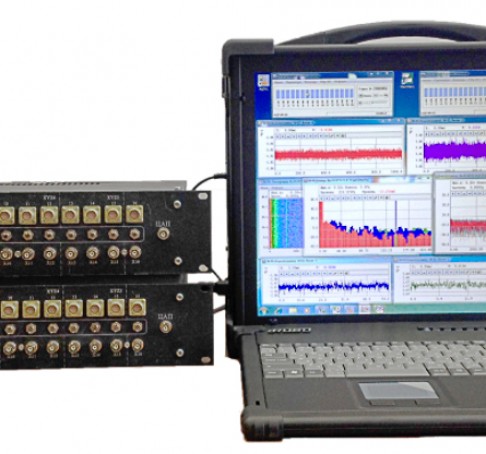
Vibration measuring systems VIS-32
Designed for:
provision of multichannel synchronous measurements (together with primary transducers) of vibroacoustic characteristics and characteristics of the external hydroacoustic field of marine objects using spectral correlation (including mutual) analysis.
providing the possibility of connecting measuring transducers of various physical quantities with various types of pre-amplifiers, including current, voltage, charge amplifier, converters with integrated ICP type electronics (IEPE, Delta Tron).
VNIIFTRI
Mendeleevo
Produced in: Mendeleevo, Moscow region
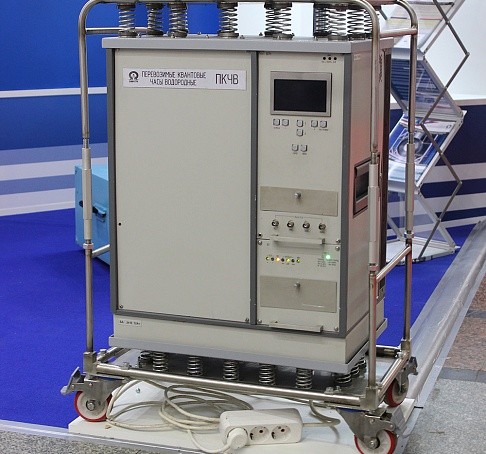
Transportable hydrogen quantum clock PKCHV-M "SAPPHIRE"
Designed for:
comparisons of time scales of geographically separated objects;
time scale formation and storage;
formation of highly stable signals with frequencies of 5 MHz, 10 MHz, 100 MHz;
measurement of the difference in time scales of spatially spaced time standards located at a distance of up to 1000 km with an error of no more than 2 ns;
measuring the frequency of reference signals of remote standards, as well as determining the parameters of instability of their frequencies and spectral characteristics of signals;
time scale storage and a source of a reference highly stable signal on mobile and stationary objects.
VNIIFTRI
Mendeleevo
Produced in: Mendeleevo, Moscow region
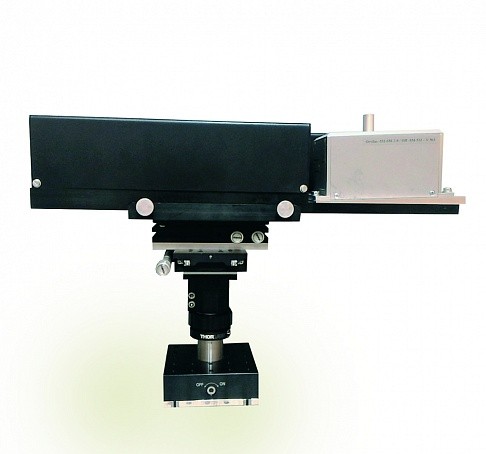
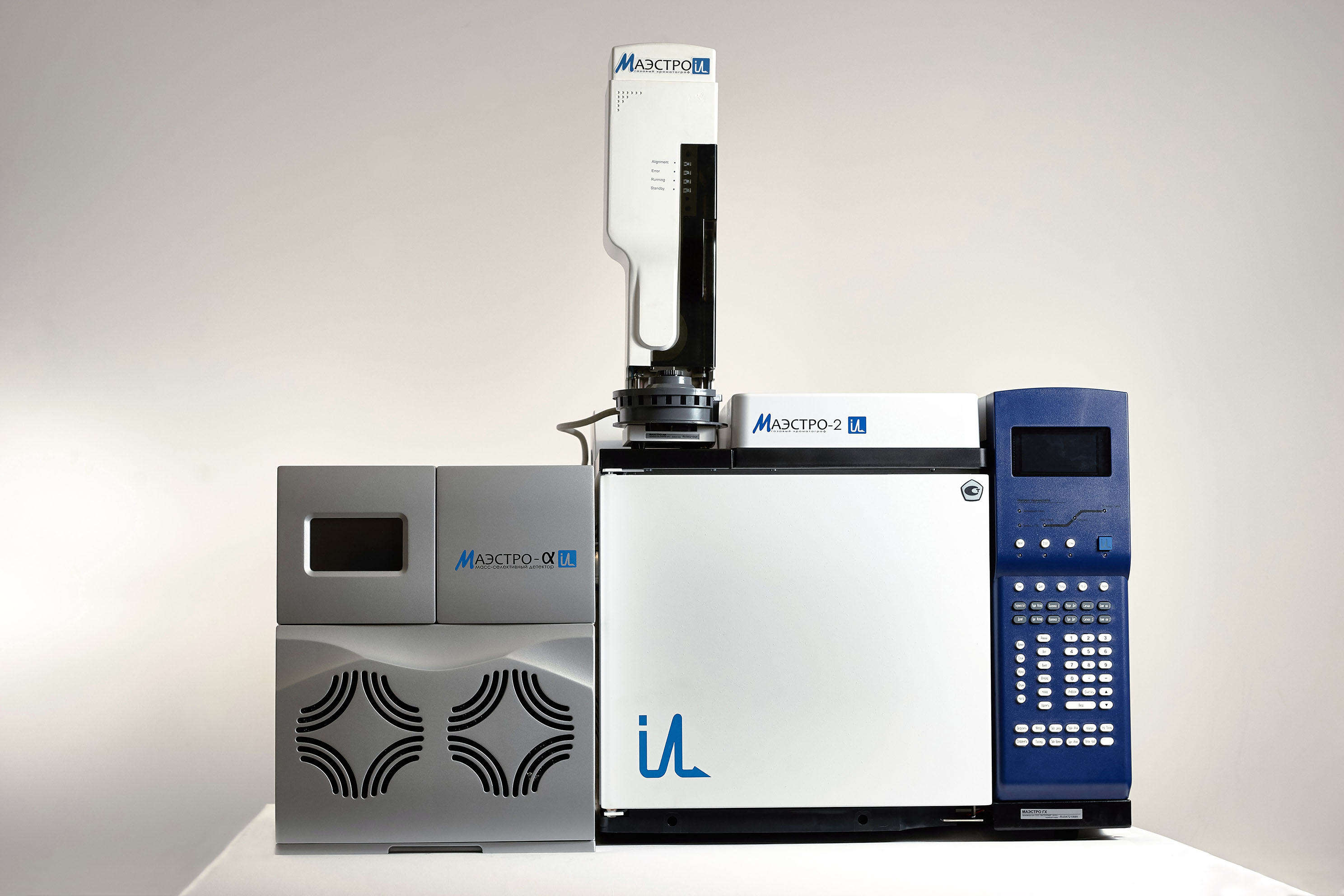
MAESTRO-αMS gas chromatograph by Interlab
We offer expert laboratories of physicochemical methods of analysis a gas chromatograph with a quadrupole mass spectrometric detector «MAESTRO-αMS». Quadrupole GC-MS «MAESTRO-αMS» is in demand for targeted research (screening) and non-targeted search. In targeted studies, it is necessary to detect given target compounds in samples of various nature and origin at the level of residual amounts, for example, several picograms of the target compound in the injected 1 μl of liquid sample. Most often, targeted research is carried out in the following areas of laboratory screening: ecology, food safety, clinical monitoring, narcology, doping control, production control of various raw materials. In targeted studies, it is often required not only to confirm the presence of a compound in a sample, but also to determine the level of its content quantitatively, since both the list of target compounds and the permissible level of their presence in the sample are specified by regulatory documents. Quantitative analysis requires standards for the substances you are looking for. When conducting a non-target search, as a rule, it is required to analyze a sample of unknown composition, in other words, to find as many compounds as possible in the sample and identify (identify) each of them. Since the identification of a detected compound is carried out by comparing its experimental mass spectrum with the spectrum of a pure substance obtained under standard conditions, this task requires reference libraries of mass spectra of pure substances, as well as tools for working with mass spectra, for example: algorithms for cleaning experimental mass spectra from background and spectral noise (mass spectrum deconvolution algorithms), library search and comparison algorithms. An off-target search is called a qualitative analysis, since the researcher is primarily interested in the list of detected substances, and not in the quantitative assessment of their content in the sample. When creating MAESTRO-αMS, we took into account our own many years of experience in operating imported analogues. We have made the device inexpensive. We have made the device compact: The modern design of the device made it possible to make the MAESTRO-αMS really compact, so that the device occupies the smallest possible area on the laboratory table. The layout of the device allows you to remove the ion source on the front flange for cleaning and replacing the cathodes, if necessary. We have reduced the cost of operation: When developing the MAESTRO-αMS, we sought to increase the resistance of the device to sample matrices and use a minimum of consumable materials in order to eliminate downtime for maintenance and replacement. As a result, we have created an extremely stable ion source and a perpetual photomultiplier detector. We have created special software: Even at the first acquaintance with the software, it becomes obvious that being in the window of each button and each parameter to be changed is expedient and logical. Our software product was created for the convenience of the operator, so we implemented the necessary and eliminated the unnecessary. We used the principle of one active window, in which the operator moves sequentially step by step, performing hardware settings, setting the data collection method, subsequent processing algorithms, templates for presenting the results. MAESTRO-αMS offers a wide range of scanning modes, built-in algorithms for working with mass spectral data, convenient unloading of initial data arrays for their processing in specialized software packages, graphics export for presentations and scientific publications. You can use several libraries of mass spectra at the same time, or create your own for your typical tasks. Finally, we provide a 5-day training course for professionals who want to understand the theoretical foundations of the method and their implementation in the hardware of modern quadrupole GC/MS. The volume and depth of presentation of the material from the developers of the device is intended to lay the foundation for the effective use of «MAESTRO-αMS» in the future. Some technical characteristics of MAESTRO-αMS: • Instrumental detection limit (SIM, OFN @272 m/z ) < 10 fg; • Scan modes: scan for selected ions, full scan in a given mass range, combined scan mode; • The number of simultaneously connected libraries of mass spectra is at least 10.
INTERLAB
Moscow
Produced in: Moscow

Anemometer ACC-3PM
from
22 218 ₽
Designed to perform two functions:
- measurements of the air flow rate (wind);
- alarm when the measured parameter exceeds the set value.
Tantal
Vladimir
Produced in: Vladimir

Anemometer ACC-3PP
from
20 688 ₽
Designed to perform two functions:
- measurements of the air flow rate (wind);
- alarm when the measured parameter exceeds the set value.
Tantal
Vladimir
Produced in: Vladimir


High-sensitivity HICMOS digital Camera
1 supp.
The highly sensitive HICMOS digital camera manufactured by Abisens LLC is used to register weak light signals, including bioluminescence, in real time, with a photon counting function and visualization of the signal accumulation process in real time (you do not need to wait for the end of the exposure time to see the light signal accumulated by this moment).
It is used as a component of high-tech laboratory equipment for scientific research, including installation in the fluorescence and bioluminescence imaging System in LumoTrace® biological samples manufactured by Abisens LLC.
Abisens
Sirius
Produced in: Krasnodar region
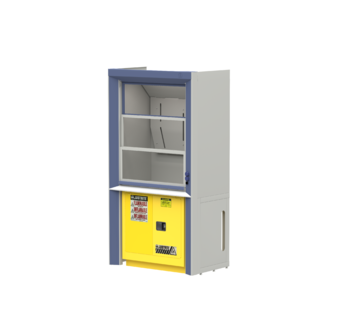
Exhaust cabinet for working with LVZH LAB-PRO SHVLVZH-J 120.74.230 KG
BASIC EQUIPMENT
Working box
front guide posts – aluminum profile painted with powder paint (RAL 7035/RAL 5023), in the right rack there are a light switch and 2 splash–proof sockets with a 3.2kW cover (IP54)
the front anti-spill side is acid-resistant polished stainless steel. AISI 304 steel
back, top, side panels – metal painted with powder paint (RAL 7035) with the texture of shagreen leather
2 dependent lifting screens – tempered glass in aluminum frames, lifting 0-780mm, do not change the dimensions of the cabinet when lifting
the upper fixed screen – tempered glass in an aluminum frame
on the upper panel:
4 anti-explosion valves
LED dust- and moisture-proof lamp (2x10W IP65) is separated from the workspace by tempered glass thickness of 4mm
flange d=250mm (distance from rear panel to the center of the flange – 170mm)
switching box with automatic emergency power off 16A
easily removable exhaust visors
3 levels of exhaust
on the rear panel:
technological hole d = 60mm with a plastic plug
counterweights are placed in the front pillars-pylons and are easily serviced
Frame base
collapsible frame made of rectangular metal profile painted with powder paint (RAL 7035) with the texture of shagreen leather
front pillars - aluminum profile painted with powder paint (RAL 7035/RAL 5023)
adjustable supports
LOIP
Saint Petersburg
Produced in: Saint Petersburg
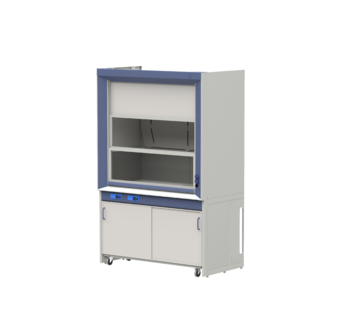
Exhaust cabinet with integrated glass-ceramic hob LAB-PRO SHVVP 150.84.230 VI
BASIC EQUIPMENT
Working box
front guide posts – aluminum profile painted with powder paint (RAL 7035/RAL 5023), in the right rack there are a light switch and 2 splash–proof sockets with a 3.2kW cover (IP54)
the front anti-spill side is acid-resistant polished stainless steel. steel (AISI 316)
rear, upper, side panels – metal painted with powder paint (RAL 7035) with the texture of shagreen leather
inner capsule made of polypropylene lined with ceramic plates of the rear and side panels to a height of 380mm
2 dependent lifting screens – tempered glass in aluminum frames, lifting 0-780mm, do not change the dimensions of the cabinet when lifting
the upper fixed screen – polypropylene
on the upper panel:
LED dust– and moisture-proof lamp 2x22 W (IP65) is separated from the working space by tempered glass with a thickness of 4mm
flange d=250mm (distance from the back panel to the center of the flange - 170mm)
switching box with automatic emergency power off 16A
3 extraction levels
easily removable exhaust canopies
the glass ceramic heating platform is located on the left side of the countertop
size 640*500mm (working area 580*430mm, 2 independent heating zones)
power up to 5.7kW
heating up
to 400 ° C counterweights are placed in the front pylon racks and are easily serviced
The frame base
is a collapsible frame made of a rectangular metal profile painted with powder paint (RAL 7035) with the texture of shagreen leather
the service panel is an aluminum profile painted with powder paint (RAL 5023) with the texture of shagreen leather
adjustable supports.
LOIP
Saint Petersburg
Produced in: Saint Petersburg
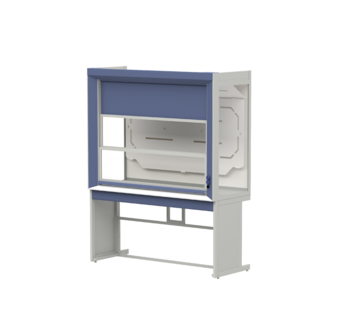
General purpose exhaust cabinet LAB-PRO SHV 180.84.230 KG
BASIC EQUIPMENT
Working box
guide racks – aluminum profile painted with powder paint (RAL 7035/RAL 5023)in the right rack there are a light switch and 2 splash-proof sockets with a 3.2kW cover (IP54)
the front anti–spill side is acid-resistant polished stainless steel AISI 304
side panels – tempered glass
2 dependent lifting screens – tempered glass in aluminum frames, lifting 0-780mm, do not change the dimensions of the cabinet when lifting
the upper fixed screen – metal painted with powder paint (RAL 5023) with the texture of shagreen leather
back and top panels –
polypropylene LED lamp dust- and moisture-proof (22W IP65)
switching box with automatic emergency power off 16A
flange d=250mm (the distance from the rear panel to the center of the flange is 170mm)
easily removable exhaust visors
3 exhaust levels (lower, side and front)
counterweights are placed in the front pylon racks and are easily serviced
Frame base
is a collapsible frame made of a rectangular metal profile painted with powder paint (RAL 7035) with the texture of shagreen leather
service panel is a metal box painted with powder paint (RAL 5023) with the texture of shagreen leather:
adjustable supports.
LOIP
Saint Petersburg
Produced in: Saint Petersburg
